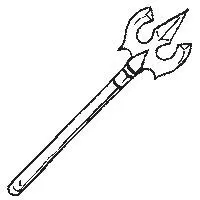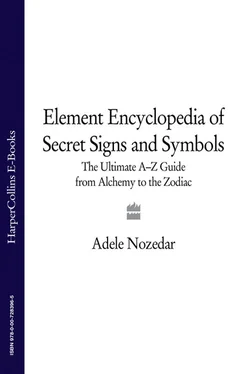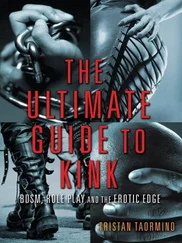As well as showing pictures of the tools involved with practical masonry, tracing boards might tell the story of Hiram Abiff’s murder or perhaps show pictures of the ritual re-enactment of this crime as part of initiation ceremonies. Tracing boards also represent features of the actual temple: the pillars, the checkerboard floor, the porch with its two columns.
The humble apron of the working Mason is elevated to almost religious status by the Freemasons. Generally made of leather, the way the apron is worn symbolizes the status of its wearer, with the bib worn up for the apprentice, or down by superior grades. Wearing the apron is representative of work and the necessity to be busy and industrious, and also of the fig leaves worn by Adam and Eve; as such the apron preserves the modesty of the wearer. Like the tracing board, the Masonic apron has the signs and symbols of the Craft embroidered on it.
One of the most famous of the many Masonic aprons is that which belonged to George Washington. Given to him in 1784 by the Marquis de Lafeyette whose wife embroidered the apron, it displays many Masonic symbols. Nothing is left to chance; the border colors of red, white, and blue are not only the national colors of France but also of the USA. Other symbols on this historic apron include:
the All Seeing Eye—
watchfulness, the Supreme Being;
rays—show the power of the Supreme Being to reach inside the hearts of men;
rainbow—symbolic of the arch of Solomon’s Temple that is supported by the two pillars, Jachim and Boaz;
Moon—the female principle;
globes on top of pillars—peace and plenty;
the three tapers—symbolize the three stages of the Sun; rising in the East, in the Southern sky at noon, and setting in the West;
trowel—symbolic of spreading love and affection, the “cement” that binds the Brothers of Freemasonry;
five-pointed star—represents friendship;
checkered pavement—often a feature of temples and again is based on the floor of Solomon’s original temple and represents the duality of opposites, male and female, and so on;
steps—represent the degrees of masonry;
coffin—represents death and therefore rebirth and is a recurrent motif in Freemasonry;
skull and crossbones—symbols of mortality but also of rebirth;
acacia;
compasses;
the square and level;
the ark—safety and refuge;
tassel and knot—the ties that bind the Brothers;
the Sun—the Light of God, the male principle;
sword and heart—symbolic of justice being done; nothing can be hidden from the eyes of the Great Architect;
seven six-pointed stars—here, seven stands for the seven liberal arts and sciences;
beehive—a symbol of industry and a reminder that man should be rational and industrious at the same time.
12. 47th PROBLEM OF EUCLID, ALSO KNOWN AS THE BRIDE’S CHAIR
This mathematical theorem has been called one of the foundations of Freemasonry. It is called the 47th Problem for no more esoteric reason than Euclid published a book of theorems, of which this was number 47.
Its significance within Freemasonry is somewhat nebulous. However, the beginnings of the Fellowship in architecture and construction, and the usefulness of the 47th Problem as a measuring device, might give us the answer. The design features in Masonic regalia including lodge decorations and Masonic “jewels.”
The 47th Problem is also called the Egyptian string trick, and a practical demonstration in making of the shape illustrates its efficacy perfectly. Take a piece of string and tie 12 knots at exact intervals along the string. Then join the ends of the string, again making sure that the knots are evenly spaced. Hammer a stick into the ground. Put one of the knots over the stick. Stretch three divisions of knots and sink another stick into the ground at the point of the third knot. Then take a third stick and skewer it into the ground at the point where a fourth knot falls. This gives a triangle in the proportions of three, four and five, and further, the lines of the string can be extrapolated to make three squares of 9 parts, 16 parts, and 25 parts.
This simple device enabled the Egyptians to remeasure their fields after the Nile flooded every few years, washing away the boundary markers. The Egyptian string trick results in a perfect right angle, an essential device in the construction of a building, and as essential today as it was thousands of years ago, although methods of constructing the angle may have changed. Pythagoras traveled to Egypt and may have discovered it there, or he may have discovered it alone. Whatever the case, it is this geometrical solution that caused him to shout “Eureka.” In addition, it is said that 100 bulls were sacrificed in honor of the importance of this seemingly simple discovery, indubitably one of the secrets that was part of the hidden knowledge of the Master Mason; it may well have been one of the pieces of information for which Hiram Abiff was murdered.
In material terms, ashlar is the rough stone that comes straight from the quarry. In philosophical terms, to the Freemason, ashlar symbolizes the rough and imperfect state of man before he is rendered smooth and perfect in his ideally realized state. It relates to the alchemical idea of base matter that can be perfected through intellectual and spiritual realization.
14. POINT WITHIN THE CIRCLE
A seemingly simple symbol, the circle with a dot at its very center is a sign of birth and resurrection dating back to Egyptian times when it was used as an emblem of the Sun God, Ra. The symbol is associated particularly with the days of St. John the Baptist and St. John the Evangelist, which fall on the summer and winter solstices respectively.
Although it is stated time and time again that the symbols inherent within Freemasonry are nondog-matic and are as such open to interpretation, it is safe to say that the features of the actual temple form an important part of the secret signs of the Craft. The floor of the temple is no exception.
It is constructed of checkered tiles of black and white. These colors represent the duality of opposites; night and day, dark and light, male and female, fire and water, Earth and air, and all the other manifestations of this concept. In
Ancient Egypt, the colors were used as a reminder of the need to unify spirit and matter.
Abbreviated words, initials, and acronyms form a large part of Masonic ritual, since the pronunciation of certain words is believed to dilute their power and abbreviations are used instead. The abbreviation of GAOTU stands for Great Architect of the Universe, which in turn refers to God. Here there is a parallel to the nature of God as the builder or designer of the macrocosm, and the role of the Freemason as the designer of the microcosm.

This is the magical weapon known as Odin’s Spear or Javelin. Like Mjolnir, the magical hammer belonging to Odin, Gungnir—whose name means “The Unwavering One”—has two very practical qualities that render it an essential tool in the arsenal of the powerful thunder god; it always hit its mark, and it always returns, like a boomerang, back to the thrower. As well as being a sacred object, there is a runic symbol, Gar, that also represents the Gungnir.
The halo, aureole, or aura all refer to an emanation of light, generally depicted appearing around the head. The halo is a symbol of spiritual sanctity or of divine grace, used in Christian iconography, for example, in pictures of saints. Although the halo is the sign that a person is blessed by the Divine, some people claim that they can actually see this phenomenon, and that the many colors of the aura that surrounds the entire body can be used as a diagnostic tool.
Читать дальше













